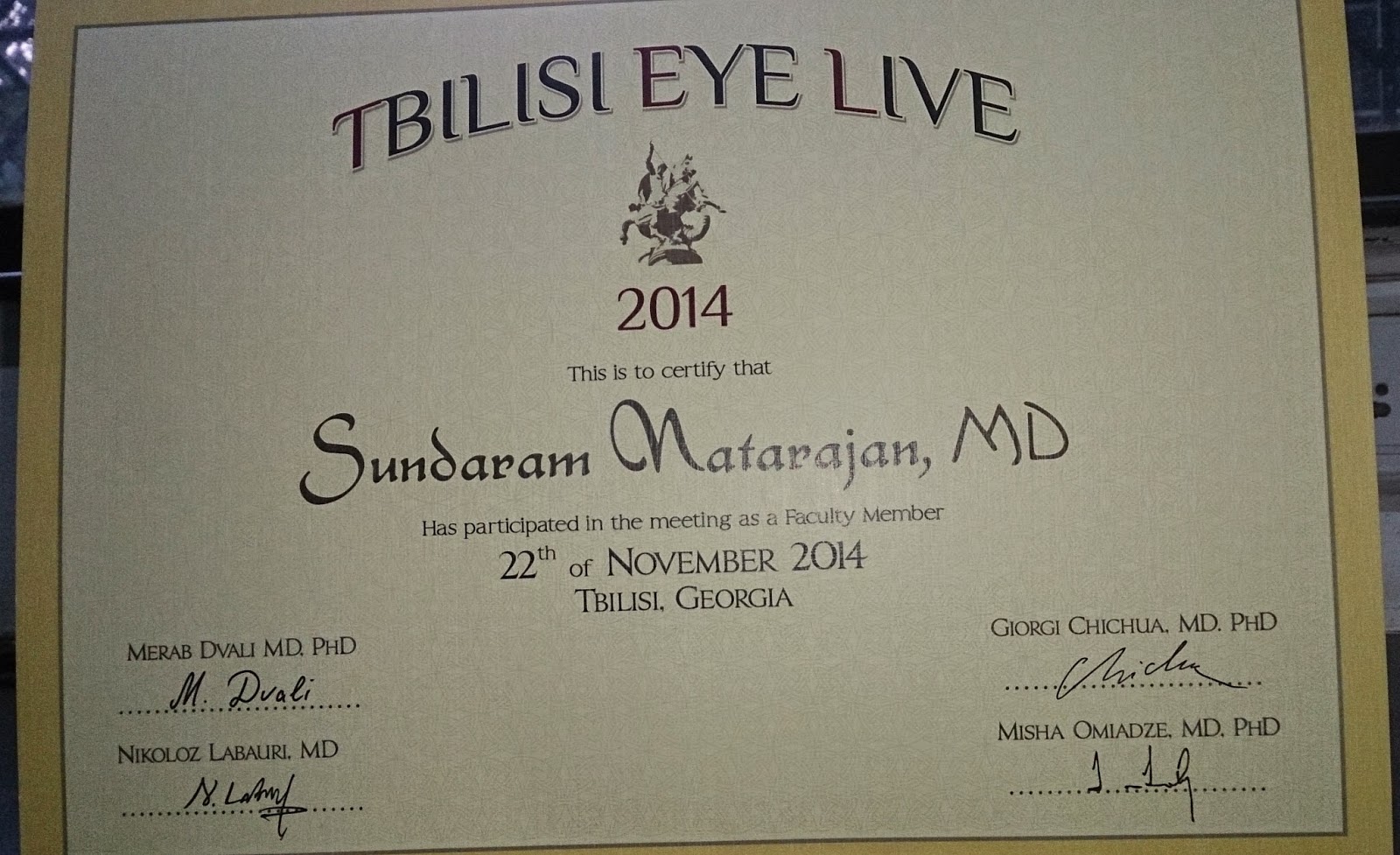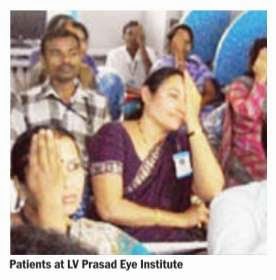Wednesday, December 31, 2014
Monday, December 15, 2014
Tuesday, November 25, 2014
Wednesday, November 19, 2014
Monday, June 16, 2014
How Andhra's LV Prasad Eye Institute delivered affordable eye care to rural patients
As medicines became more effective, affordable and accessible over the last few decades, Indians began to live
longer. But, cataract incidents increased. Due to the painless nature of the ailment, a number of the rural underprivileged
postponed their treatment until you had thousands of burst cataract cases leading to blindness.
Then something happened. The introduction of micro-surgery transformed the surgical process; cataract patients,
who needed to be admitted to hospitals two days before the operation and nursed for a week thereafter, could
now walk out within three hours of the operation; infections declined; the cost of a cataract surgery dropped
from Rs 5000 to Rs 800 (effectively adjusted post-inflation to a couple of hundred rupees).
And just so rarely there comes a time in the history of surgical intervention when there is a sweet convergence:
huge unmet medical needs on the one hand and a sharp decline in treatment costs on the other. Treatments
accelerated. A number of institutions now began to emerge: hospitals began to fund cataract treatments for the
underprivileged as an extension of their corporate social responsibility, a number of NGOs began to focus
exclusively on cataract treatment; individuals stepped forward with requests like `please conduct 200 surgeries
and send me the bill'. The result is that thanks to an increasing number of surgeons who volunteer to waive their
personal fees, it is now possible to transform someone's life for as little as a return taxi fare from Nariman Point
to the airport.
Over the years, Gullapalli Pratibha Rao International Centre for Advancement of Rural Eye Care (GPR ICARE),
the public health component of LV Prasad Eye Institute (LVPEI), recognised that an increasing number of those
who turned up outside its doorstep were from rural India. So LVPEI reversed the paradigm; the agency not only
conducted research in the improvement and advancement of eye health care services, but also volunteered to
deliver affordable eye health care services for rural patients.
This is where the story gets interesting. Rather than make biannual sorties to address rural under privileged
needs, GPR ICARE did something different. It selected to commission secondary eye centres in care-deficit
areas. That's right, permanent infrastructure. Not just one or two, but 11 secondary centres (addressing
population clusters of 500,000 through cataract and other surgeries like glaucoma, pterygium, trauma, lid and sac
related procedures) and 109 Vision Centres (primary care service delivery unit serving the eye care needs of a
population of 50,000, covering refraction, recognition and referral cases).
Over the last few years, two initiatives have extended these outreach programmes from the focused to the
holistic, from the usual to the special.
While it would have been reasonable to provide this rural philanthropic model with basic survival tools, GPR
ICARE invested in an Electronic Medical Records System (EMR) to assess ailment patterns and devise counter6/
16/2014
2/3
strategies. Besides, LVPEI asked some searching questions: `What about the need to rehabilitate individuals with
irreversible blindness and visual impairment? What about the equal opportunities they needed in the area of
health care, education, socialisation, economic independence and social inclusion that would make them equal to
everyone else?' The result: what started as an eye-care intervention extended to holistic rehabilitation.
Only when you peel the first layer of LVPEI's philanthropic engagement will you arrive at the core of what the
institution stands for: 2,538 persons identified with irreversible visual impairment; of these, 1,387 women, men,
adolescent girls and boys imparted need-based skills (personal hygiene, self-care, grooming, household chores,
washing clothes and utensils, cleaning, shopping etc.); 1,094 persons helped with mobility canes, training in
indoor and outdoor mobility techniques, travel concessions from road and railway services, monthly pensions for
the handicapped, monthly retirement funds, school admission and self-employment opportunities; beneficiaries
provided with enhanced awareness of their rights and self-advocacy leading to `complete inclusion'. The
objective then at LVPEI is not to treat people with eye ailments; it is making them independent.
At LVPEI, the magic has extended from intent to extent. From 1995, LVPEI's Andhra Pradesh centres covered
6,923 villages and a population of 6,355,671 through door-to-door surveys, which referred 8,11,092 individuals
for appropriate eye care services.
Further, this program conducted community eye screening, Vision Centre services and hospitalbased services to
734,312 persons, spectacles to 244,701, operations for 42,772 with cataract and other conditions and medical
treatment to 446,839 persons. Besides, the program conducted screening programs in 6,368 schools and 875
anganwadis covering 612,632 children (84,662 identified with eye problems). Besides, LVPEI has gradually
widened its Andhra-rich footprint to Moradabad, Jorhat, Udhampur (Kashmir) and Tezpur; last year, it
conducted countrywide situation analysis in Myanmar and Liberia.
LVPEI's intervention is a remarkable instance of how a philanthropic competence can be extended from a `you
come to me' model to `let me go where I am most needed; from `let me do more and more of less and less' to
`let me do the widest good for the largest number.' It is what visionaries are made of.
As medicines became more effective, affordable and accessible over the last few decades, Indians began to live
longer. But, cataract incidents increased. Due to the painless nature of the ailment, a number of the rural underprivileged
postponed their treatment until you had thousands of burst cataract cases leading to blindness.
Then something happened. The introduction of micro-surgery transformed the surgical process; cataract patients,
who needed to be admitted to hospitals two days before the operation and nursed for a week thereafter, could
now walk out within three hours of the operation; infections declined; the cost of a cataract surgery dropped
from Rs 5000 to Rs 800 (effectively adjusted post-inflation to a couple of hundred rupees).
And just so rarely there comes a time in the history of surgical intervention when there is a sweet convergence:
huge unmet medical needs on the one hand and a sharp decline in treatment costs on the other. Treatments
accelerated. A number of institutions now began to emerge: hospitals began to fund cataract treatments for the
underprivileged as an extension of their corporate social responsibility, a number of NGOs began to focus
exclusively on cataract treatment; individuals stepped forward with requests like `please conduct 200 surgeries
and send me the bill'. The result is that thanks to an increasing number of surgeons who volunteer to waive their
personal fees, it is now possible to transform someone's life for as little as a return taxi fare from Nariman Point
to the airport.
Over the years, Gullapalli Pratibha Rao International Centre for Advancement of Rural Eye Care (GPR ICARE),
the public health component of LV Prasad Eye Institute (LVPEI), recognised that an increasing number of those
who turned up outside its doorstep were from rural India. So LVPEI reversed the paradigm; the agency not only
conducted research in the improvement and advancement of eye health care services, but also volunteered to
deliver affordable eye health care services for rural patients.
This is where the story gets interesting. Rather than make biannual sorties to address rural under privileged
needs, GPR ICARE did something different. It selected to commission secondary eye centres in care-deficit
areas. That's right, permanent infrastructure. Not just one or two, but 11 secondary centres (addressing
population clusters of 500,000 through cataract and other surgeries like glaucoma, pterygium, trauma, lid and sac
related procedures) and 109 Vision Centres (primary care service delivery unit serving the eye care needs of a
population of 50,000, covering refraction, recognition and referral cases).
Over the last few years, two initiatives have extended these outreach programmes from the focused to the
holistic, from the usual to the special.
While it would have been reasonable to provide this rural philanthropic model with basic survival tools, GPR
ICARE invested in an Electronic Medical Records System (EMR) to assess ailment patterns and devise counter6/
16/2014
2/3
strategies. Besides, LVPEI asked some searching questions: `What about the need to rehabilitate individuals with
irreversible blindness and visual impairment? What about the equal opportunities they needed in the area of
health care, education, socialisation, economic independence and social inclusion that would make them equal to
everyone else?' The result: what started as an eye-care intervention extended to holistic rehabilitation.
Only when you peel the first layer of LVPEI's philanthropic engagement will you arrive at the core of what the
institution stands for: 2,538 persons identified with irreversible visual impairment; of these, 1,387 women, men,
adolescent girls and boys imparted need-based skills (personal hygiene, self-care, grooming, household chores,
washing clothes and utensils, cleaning, shopping etc.); 1,094 persons helped with mobility canes, training in
indoor and outdoor mobility techniques, travel concessions from road and railway services, monthly pensions for
the handicapped, monthly retirement funds, school admission and self-employment opportunities; beneficiaries
provided with enhanced awareness of their rights and self-advocacy leading to `complete inclusion'. The
objective then at LVPEI is not to treat people with eye ailments; it is making them independent.
At LVPEI, the magic has extended from intent to extent. From 1995, LVPEI's Andhra Pradesh centres covered
6,923 villages and a population of 6,355,671 through door-to-door surveys, which referred 8,11,092 individuals
for appropriate eye care services.
Further, this program conducted community eye screening, Vision Centre services and hospitalbased services to
734,312 persons, spectacles to 244,701, operations for 42,772 with cataract and other conditions and medical
treatment to 446,839 persons. Besides, the program conducted screening programs in 6,368 schools and 875
anganwadis covering 612,632 children (84,662 identified with eye problems). Besides, LVPEI has gradually
widened its Andhra-rich footprint to Moradabad, Jorhat, Udhampur (Kashmir) and Tezpur; last year, it
conducted countrywide situation analysis in Myanmar and Liberia.
LVPEI's intervention is a remarkable instance of how a philanthropic competence can be extended from a `you
come to me' model to `let me go where I am most needed; from `let me do more and more of less and less' to
`let me do the widest good for the largest number.' It is what visionaries are made of.
Subscribe to:
Posts (Atom)


























